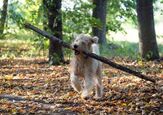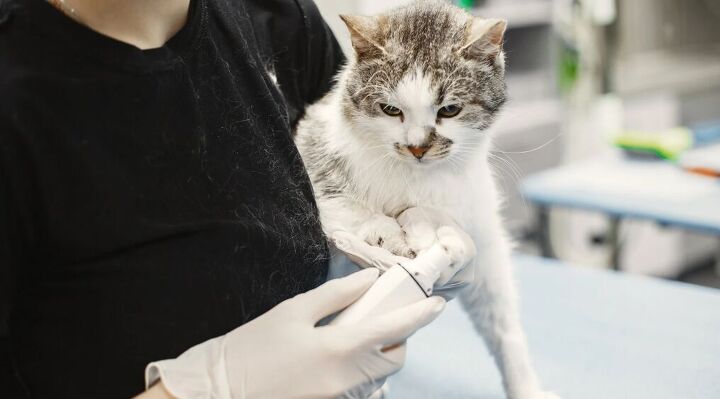Are you looking for new activities and events to enjoy with your pup? If so, you may want to explore the world of scent work! It’s a fun and engaging activity that allows your dog to tap into their natural abilities. It’s a great opportunity to build your bond and boost confidence through a rewarding game. If you really love it, there are even opportunities to get involved with scent work on a competitive level!In this guide, I’ll share everything you need to get started in scent work today, including a better understanding of what scent work involves, the benefits of this game for your dog, and step-by-step instructions to get started with this activity in your own home. What are you waiting for?What Is Scent Work? To truly appreciate scent work and the benefits it offers for your dog, we first need to understand the basics. This starts with the instrument at its core: a dog’s nose. The Master Tool That Is Your Dog’s Nose Your dog’s nose is more than just an adorable boopable button; it’s a masterpiece of evolution that helps them navigate the world around them. Its power is almost unbelievable! While humans have approximately 5 million scent receptors, our dogs possess 125 million to 300 million, depending on the breed. This means they can experience a world of smells that is far more detailed than anything we can even begin to imagine. They detect odors at concentrations that aren’t even noticeable to us. In addition to the number of scent receptors, the structure of your dog’s nose improves their powerful smelling abilities. When they breathe in, a fold of tissues separates the air into two distinct pathways: one for breathing and one exclusively for those receptors to detect smells. These two pathways allow them to breathe and analyze scents at the same time. They also have a specialized organ called a “vomeronasal organ” (or Jacobson’s organ) at the roof of their mouth, which detects specific scents like pheromones and other chemical signals. When all of this works together, dogs can discriminate and identify individual odors even when they are mixed together with many others. Imagine walking into a busy kitchen filled with the smells of coffee, toast, and bacon. A human nose might just smell “breakfast.” Your dog’s nose, however, can identify the coffee, the specific type of bread, and even differentiate between bacon and sausage. This incredible ability is why scent work is why they are so skilled at detecting specific substances. The Basics of Scent WorkScent work is an activity that leverages this incredible power of smell by turning it into a structured search game. At the heart of scent work is the “target odor.” This is the specific scent that your dog is trained to find. Traditional scent work often focuses on essential oils like birch, anise, or clove, diluted to a specific (and safe to smell) concentration. However, for home-based fun, a target odor can be anything from a high-value treat or specific toy to a unique household item like your car keys. The key is that the dog learns to associate this particular scent with a reward. It’s also important to note that scent doesn’t just sit still; it moves. As air moves through or over a hidden scent source, it can create a “scent cone” or “plume,” a trail of odor that disperses into the surrounding environment. Dogs are masters at finding and navigating these plums, following the scent back to the source. They learn to identify the strongest point of the scent, which leads them directly to the hidden item. An important concept to understand in scent work is the difference between the actual source of the smell (where the target odor or item is located) and contamination (residual scent left behind as the item was moved or handled). Through their training, dogs learn to indicate only at the source, ignoring the weaker contamination, but this precision takes time and practice. At its roots, scent work is a search game. You hide the target odor, and your dog uses their nose to find it. When they do so successfully, they are rewarded. This simple concept is the foundation of all scent work, from casual home activities to competitive trials. The joy for your dog comes from the hunt and the reward. For the handler, the joy comes from watching your dog engage in an activity that is fun and naturally fulfilling. The Benefits of Scent Work for Your Dog Scent work is a great way to keep your dog busy (we all know how important that is, especially if you have a young, active puppy or a high-energy dog at home). But it’s more than that! It impacts their mental, emotional, and even physical well-being, helping to give them the best possible quality of life. Here are some of the benefits it offers: Mental Stimulation and Enrichment Scent work is often described as a “brain game” because it requires your dog to use their mental abilities, including problem-solving, concentration, decision-making, and memory. Unlike physical exercise, which tires the body, scent work is a form of mental enrichment that tires the mind out in a highly satisfying way. In fact, a dog who has spent 15-20 minutes intensely searching for scents will often be as tired, if not more so, than a dog that has had a long walk! Many common behavioral problems people face with their dogs, such as destructive chewing, excessive barking, or digging, can be traced back to boredom and a lack of appropriate outlets for their pent-up mental and physical energy. Scent work gives your dog a constructive and engaging activity to channel their energy into, which goes a long way in preventing these unwanted behaviors.

























